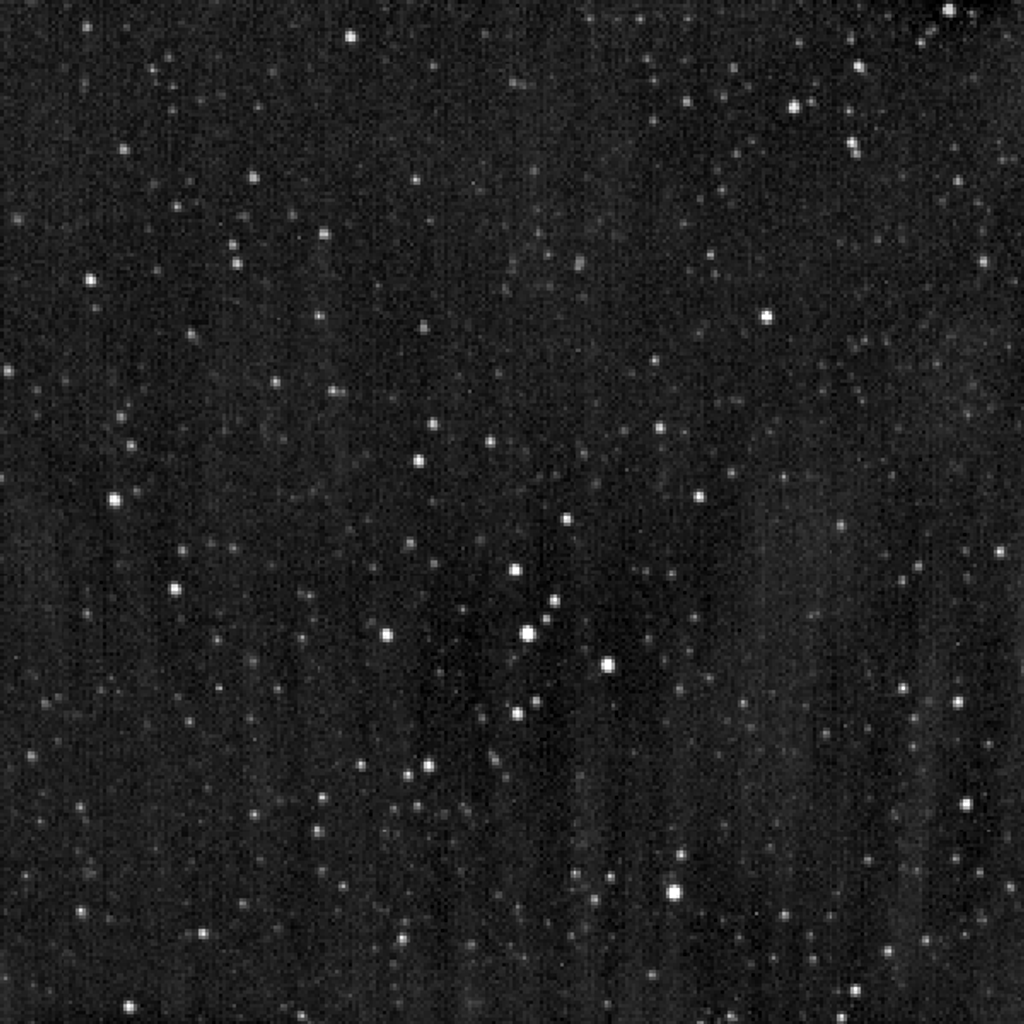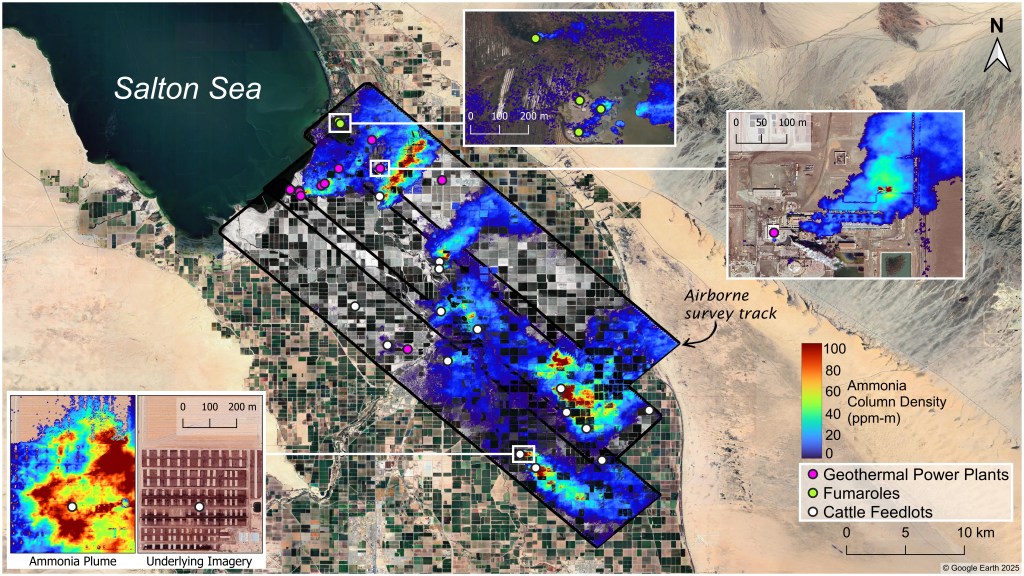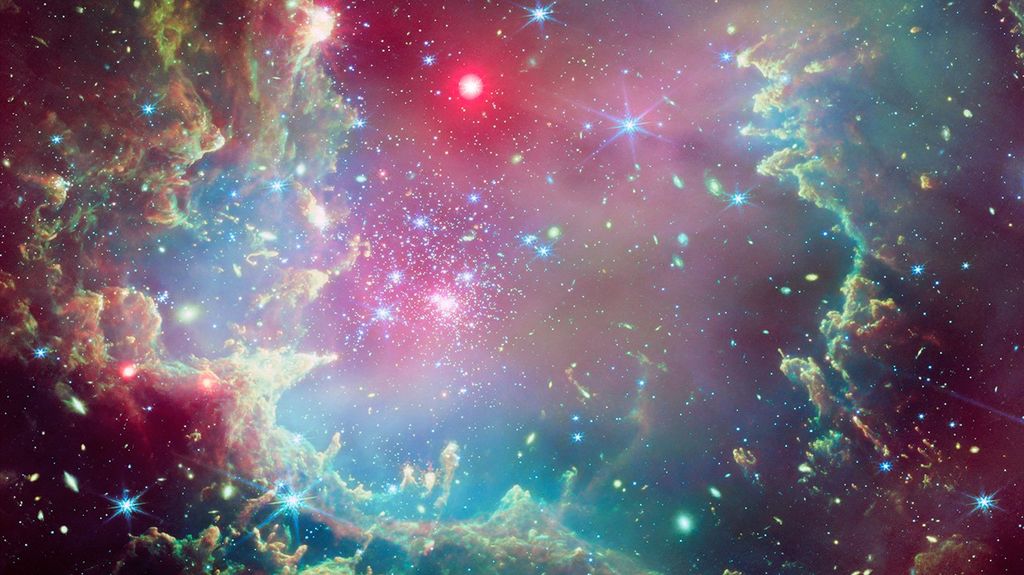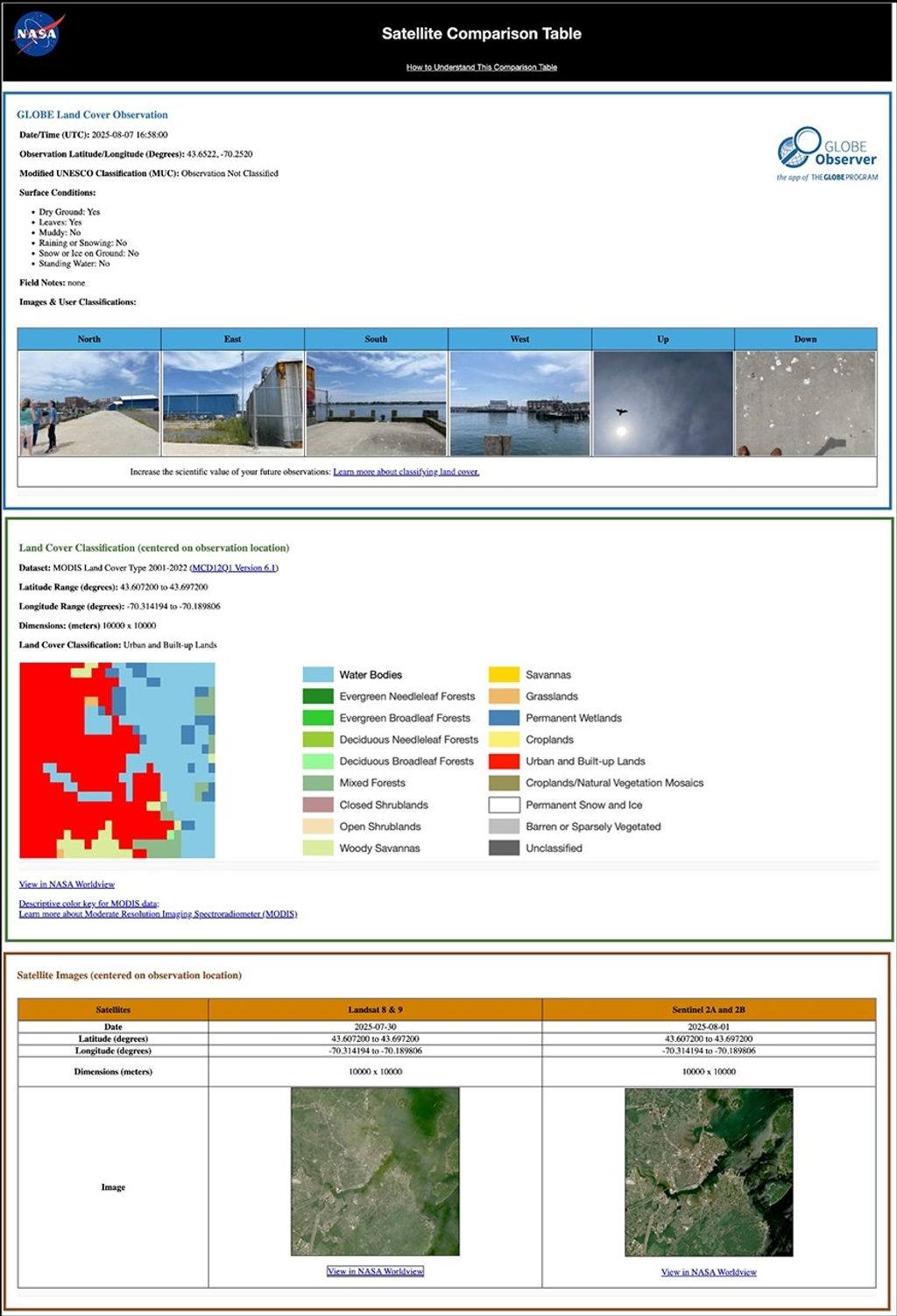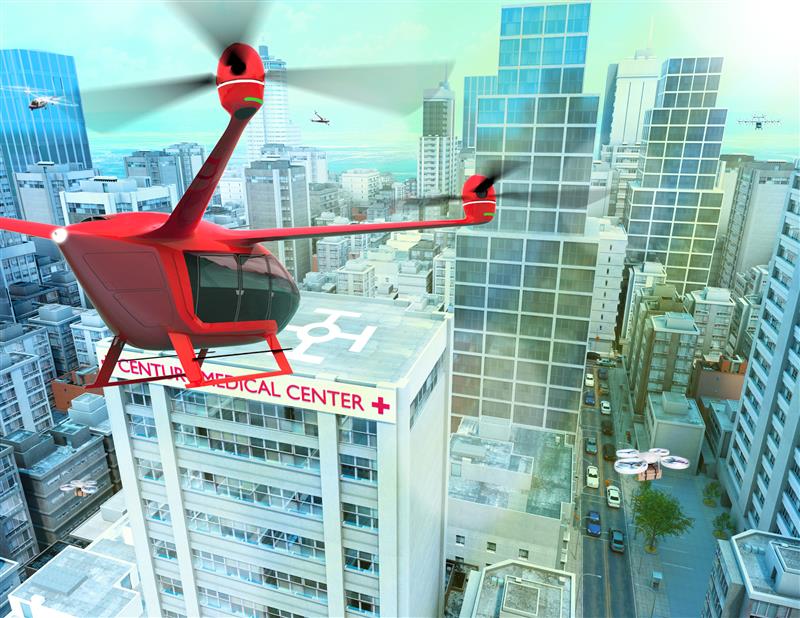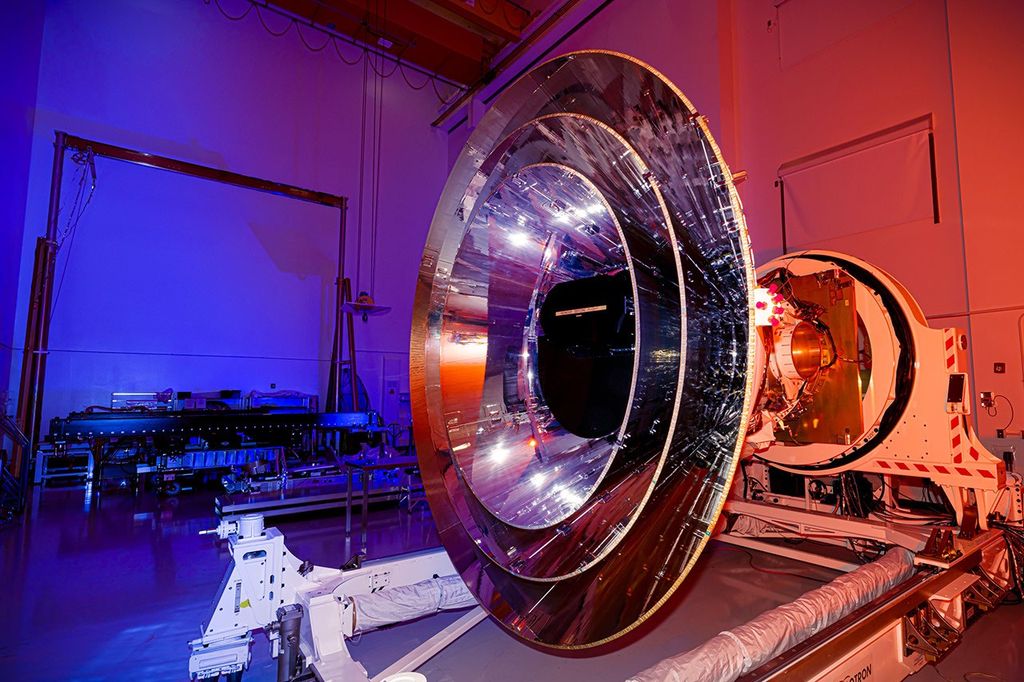1 min read
Galaxy Cluster Magnifies Light of More-Distant Galaxy
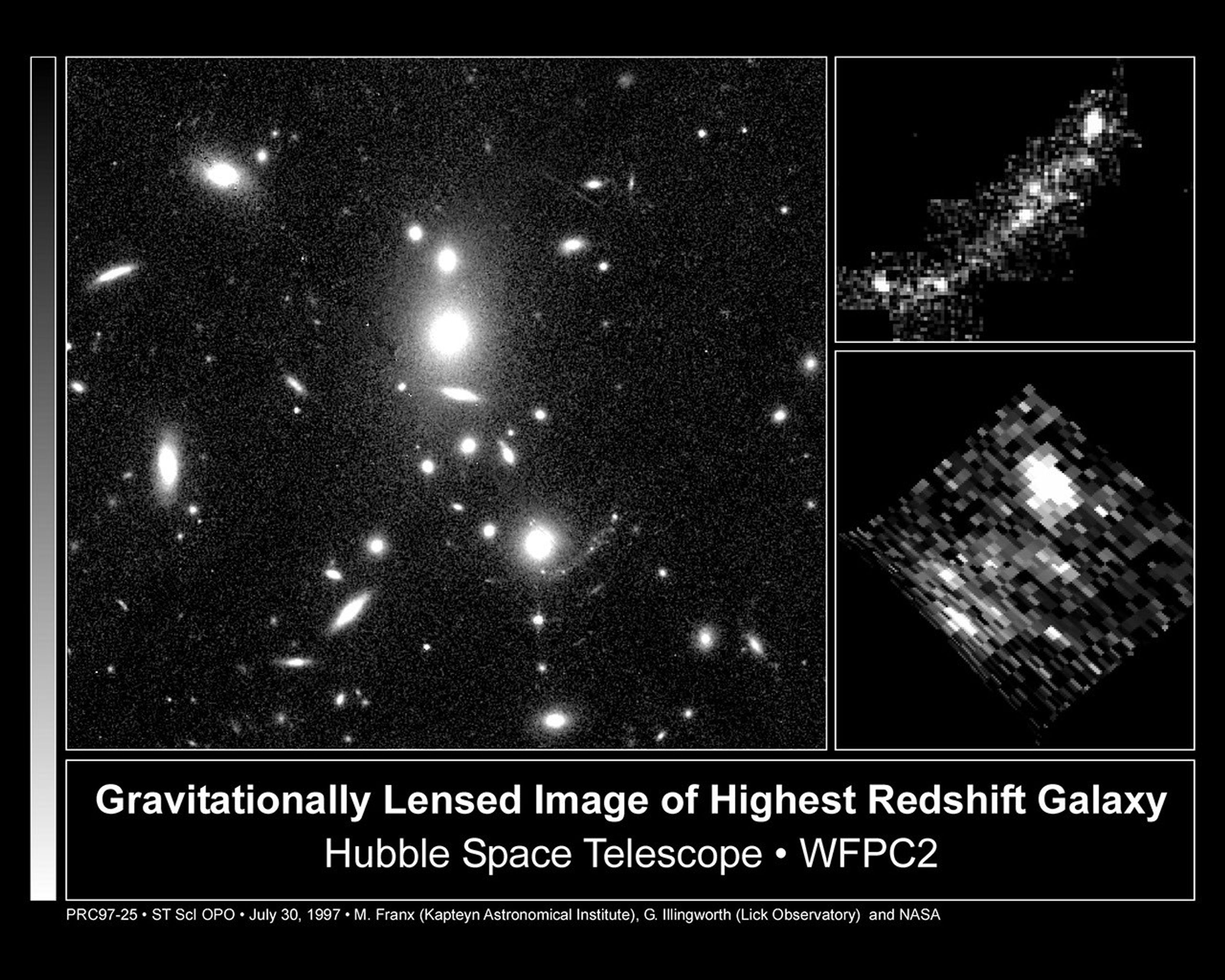
[LEFT] A NASA Hubble Space Telescope image of the galaxy cluster CL1358+62 has uncovered a gravitationally-lensed image of a more distant galaxy located far beyond the cluster. The gravitationally-lensed image appears as a red crescent to the lower right of center. The galaxy's image is brightened, magnified, and smeared into an arc-shape by the gravitational influence of the intervening galaxy cluster, which acts like a gigantic lens.
Exact measurement of the distance from spectroscopic observations with the W. M. Keck Observatory in Hawaii show the lensed galaxy is the farthest ever seen. Its light is only reaching us now from a time when the universe was but 7% its current age of approximately 14 billion years. This places the young galaxy as far as 13 billion light-years away. The lensing foreground cluster is 5 billion light-years from us.
[UPPER RIGHT] A close-up of the gravitationally-lensed image shows why astronomers are excited about this unique opportunity to study the distant galaxy's structure. The stretched-out image reveals tiny knots of vigorous starbirth activity. This provides a first detailed look at the early construction phase of a galaxy undergoing formation.
[LOWER RIGHT] A theoretical model of the cluster lens is used to "unsmear" the gravitationally-lensed image back into the galaxy's normal appearance. The corrected image gives a highly magnified view of the distant galaxy with detail 5-10 times smaller than Hubble alone can provide. It clearly shows several bright, very compact regions of intense star formation. These starburst regions are as 700 light-years across. The knots are so bright they indicate bursts of star formation taking place at a much faster rate than seen in most galaxies at the present time.
The image was taken with Hubble's Wide Field Planetary Camera-2 on January 13, 1996. The true color rendition was created from separate exposures taken through a red and a near-infrared filter (the F606W and F814W filters). The image on the left is 64 arcseconds wide, that on the upper right is 10 arcseconds wide, while that at lower right is only 2 arcseconds wide.
About the Object
- R.A. PositionR.A. PositionRight ascension – analogous to longitude – is one component of an object's position.13h 59m 54.3s
- Dec. PositionDec. PositionDeclination – analogous to latitude – is one component of an object's position.62° 30' 36.0"
- Object NameObject NameA name or catalog number that astronomers use to identify an astronomical object.CL1358+62
- Release DateJuly 30, 1997
- Science ReleaseWorld’s Most Powerful Telescopes Team Up With a Lens in Nature to Discover Farthest Galaxy in the Universe
- CreditMarijn Franx (University of Groningen, The Netherlands), Garth Illingworth (University of California, Santa Cruz) and NASA
Related Images & Videos

Location of the Gravitationally Lensed Galaxy in the Cluster
A NASA Hubble Space Telescope image of the galaxy cluster CL1358+62 has uncovered a gravitationally-lensed image of a more distant galaxy located far beyond the cluster. The gravitationally-lensed image appears as a red crescent to the lower right of center. The galaxy's image...

A Close-Up of the Gravitationally-Lensed Image
A close-up of the gravitationally-lensed image shows why astronomers are excited about this unique opportunity to study the distant galaxy's structure. The stretched-out image reveals tiny knots of vigorous starbirth activity. This provides a first detailed look at the early...

Corrected Image of the Gravitationally-Lensed Image
A theoretical model of the cluster lens is used to "unsmear" the gravitationally-lensed image back into the galaxy's normal appearance. The corrected image gives a highly magnified view of the distant galaxy with detail 5-10 times smaller than Hubble alone can provide. It...
Share
Details
Claire Andreoli
NASA’s Goddard Space Flight Center
Greenbelt, Maryland
claire.andreoli@nasa.gov






